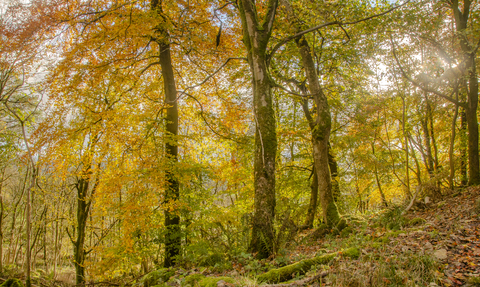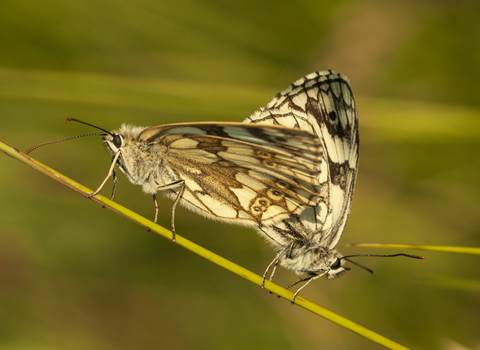
Brimstone © Allen Holmes 2020

Adam Jones

Ledston Luck Nature Reserve
Location
Know before you go
Dogs
Please respect the resident wildlife and keep dogs on a short lead.
When to visit
Opening times
Open at all times. We recommend a 1 hour trip for this reserve. If you are eager for a longer outing why not or combine with visits to Kippax Meadows or Townclose Hills, both just one mile away.Best time to visit
March to SeptemberAbout the reserve
It’s very easy to drive straight past the reserve, as it’s tucked away behind the A656 and local businesses, but this is a hidden gem that’s well worth seeking out. The sights and sounds of this gorgeous site today could not be more different to its heyday as a coal pit. Since the pit closed in 1986, a lovely range of wildlife habitats have sprung up – some by themselves and some, including the woodlands, ponds and some areas of meadow, that have had a helping hand.
During the summer, the grassland is truly a sight to behold, as it erupts with wildflowers, including hundreds of orchids. These include common spotted and southern marsh orchids and hybrids between the two, and northern marsh, bee and pyramidal orchids. Livestock have been introduced for grazing to help give these beautiful flowers space to thrive. There’s a great variety of birds here and it would be easy to spend half a day getting absorbed in watching them. Keep your eyes peeled for willow tits and green woodpeckers, and listen for the distinctive calls of nesting blackcaps and yellowhammers. There are herons, coots and moorhens on the lake, while little egrets occassionally fly over. This is a great place for dragonflies, and they’ve been helped by clearance work on some of the ponds and ditches. The main pond attracts emerald and large red damselflies, emperor dragonfly and four-spotted chasers, to name just a few.
Species
Contact us
About
You could easily drive right by this stunning site as it is hidden away behind the village of Ledston Luck. This green space is a bit of a gem and a must see to appreciate its stunning population of orchids and wide variety of birds.
During the summer, the grassland on the top plateau bursts into life with a variety of wildflowers. It is particularly noteworthy for the orchid population which includes some 4000+ common spotted-orchids, southern marsh orchids and hybrids between the two, and bee orchids. The site is grazed during the spring to remove grasses, decreasing competition for these beautiful orchids.
The pond on Ledston Luck holds a variety of pond life including emerald damselfly, emperor dragonfly, large red damselfly and four spotted chasers while the woodland and scrub are home to breeding birds such as grasshopper warbler and yellowhammer. If you are lucky you may spot a woodpecker.
By taking the informal footpaths through the site you can enjoy the different habitats which have transformed this post-industrial site into something quite special.
Seasonal highlights
- Spring: Invertebrates - Brimstone; Large red damselfly; Broad-bodied chaser; Birds - Willow warbler; Sedge warbler
- Summer: Plants - Common spotted orchid; Bee orchid; Invertebrates - Four spotted chaser; Birds - Grasshopper warbler
- Autumn: Birds - Fieldfare; Redwing
- Winter: Birds - Grey heron; Yellowhammer
History
Ledston Luck pit was sunk in the 1870s and became part of the linked 'superpit' around Selby. The pit closed in 1986 and now the site supports a range of wildlife habitats, some of which have developed naturally, though most, including the woodlands, ponds and some areas of meadow were created in the early 1990s as part of a landscape improvement scheme.
Ledston Luck is part of the green corridor in the Lower Aire Valley in Leeds which is owned by Leeds City Council and managed in partnership with the Trust.
Directions
Public transport
Buses run between Leeds and Castleford, stopping on Ridge Road.
Directions
From the north leave the M1 South at Junction 47. Take the first exit onto A656. Head straight over at the roundabout and continue on the A63. Turn left into the Enterprise Park car park.
Did you know?
Ledston Luck coal pit was linked to other pits in a ‘super pit’ around Selby. It’s now part of a super wildlife corridor in the Lower Aire Valley!

The autumn colours were even more beautiful when the sun came out
Photo Credit - Telling our Story Volunteer, Sara




